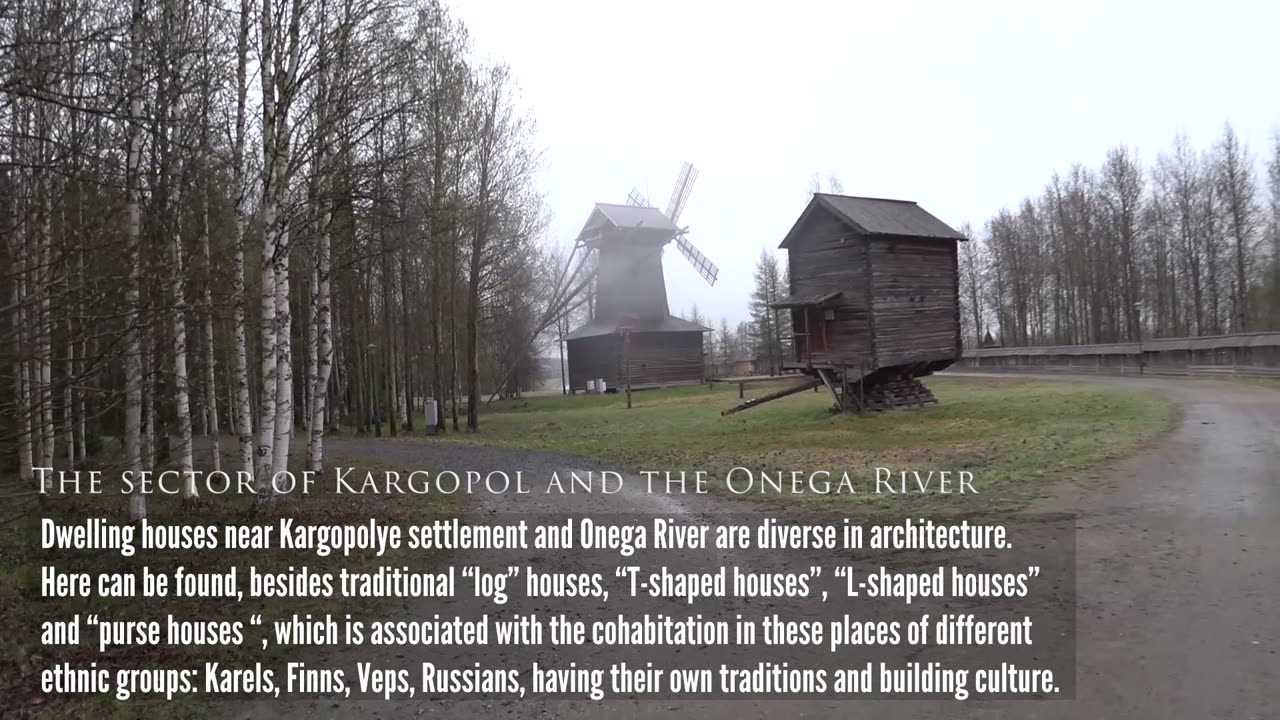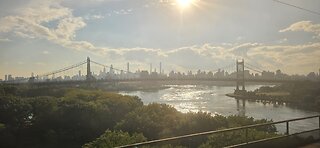Premium Only Content

How did Russians used to live in northern Russia?
The traditional wooden architecture was recognized at the time as one of the most characteristic features of the Russian North.
In the Arkhangelsk region, you can visit a unique place with unique examples of northern architecture dating back to the 17th century.
Rapid urbanization has led to the disappearance of many villages, so the idea of preserving wooden buildings arose during Soviet times.
At the end of the 1980s, some buildings, churches, chapels, and peasant houses, scattered all over the Arkhangelsk region, were put under state protection; as a result, a kind of open-air museum was organized, where you can see how the northern Russian villages in the distant past.
The goal of the village of Malye Korely is to save the most outstanding wooden monuments.
It's great that the creators of this open-air museum have provided each house with a sign with the name of its former owners, thus immortalizing the names of ordinary people who lived in rural Russia.
Malye Korely is currently divided into four sectors spread over 140 hectares of a rolling forested landscape.
1. The sector of Kargopol and the Onega River (00:56)
Dwelling houses near Kargopolye settlement and Onega River are diverse in architecture. Here can be found, besides traditional "log" houses, "T-shaped houses", "L-shaped houses" and "purse houses ", which are associated with the cohabitation in these places of different ethnic groups: Karels, Finns, Veps, Russians, having their own traditions and building culture.
2. The Dvina sector (04:11)
Houses in the Northern Dvina river basin are distinguished by their large size, height, proportionality, and expressiveness of individual details. A characteristic feature of the houses in the Dvina sector is the large roof overhangs over the central gable of the house, the mighty overhang supported by consoles.
3. The Pinega sector (07:36)
The Pinega sector reflects the architecture and life of the people who lived in the Pinega River basin, the largest tributary of the Dvina River. Wooden houses here are placed facing the sun. Here, in contrast to other regions of the Russian North, barns were located behind the village, forming a kind of barn streets or "towns". Pinega barns are placed on tall posts to prevent rodents from entering the premises. In the barn, peasants stored the most valuable - grain, festive, and winter clothes. The front wall of the barn has a canopy over the front wall, which serves as a shelter from rain and snow.
4. The Mezen sectors (08:07)
A characteristic feature of the Mezensk settlements is retaining walls because most of them are on high riverbanks. When the snow melts, as well as during intense floods, the clay soil is easily eroded, which can lead to the sliding of the ground. Therefore, in many villages, there is a need for additional reinforcement of river banks.
-
 1:55:20
1:55:20
The White House
12 hours agoPresident Trump Participates in the Memorial Service for Charlie Kirk
103K91 -
 1:02:41
1:02:41
Sarah Westall
11 hours agoDomestic Terror Operation: Death Threats, Smear Campaigns, Gang Stalking w/ Journalist Sarah Fields
56.2K9 -
 1:51:40
1:51:40
Nerdrotic
11 hours ago $20.05 earnedGobekli Tepe Discovery and "Reconstruction" | Forbidden Frontier #118
90.6K10 -
 29:07
29:07
Tactical Advisor
11 hours agoATF Changes Ruling on SBR & Tacpack unboxing | Vault Room Live Stream 039
98.4K19 -
 2:00
2:00
From Zero → Viral with AI
17 hours ago $5.66 earnedAre You Being Left Behind? Why AI Marketing is No Longer Optional
53.5K8 -
 9:10
9:10
BlackDiamondGunsandGear
14 hours agoI Finally Got it! / Rough Country Build Ep.1
36.4K9 -
 9:44
9:44
Millionaire Mentor
3 days agoCharlie Kirk Brings Woke Student To STUTTERING Over White Privilege Lies
37.9K12 -
 24:12
24:12
MudandMunitions
15 hours agoOff-Roading with NYPrepper Wild Elk & PA’s Most Remote Backroads
24.1K1 -
 DVR
DVR
Bannons War Room
7 months agoWarRoom Live
37.4M8.69K -
 3:13:07
3:13:07
IsaiahLCarter
15 hours ago $1.26 earnedAPOSTATE RADIO 029: Leftist Violence, & NYC's Mayor's Race (Guests: Lattina Brown and David Sivella)
19.2K